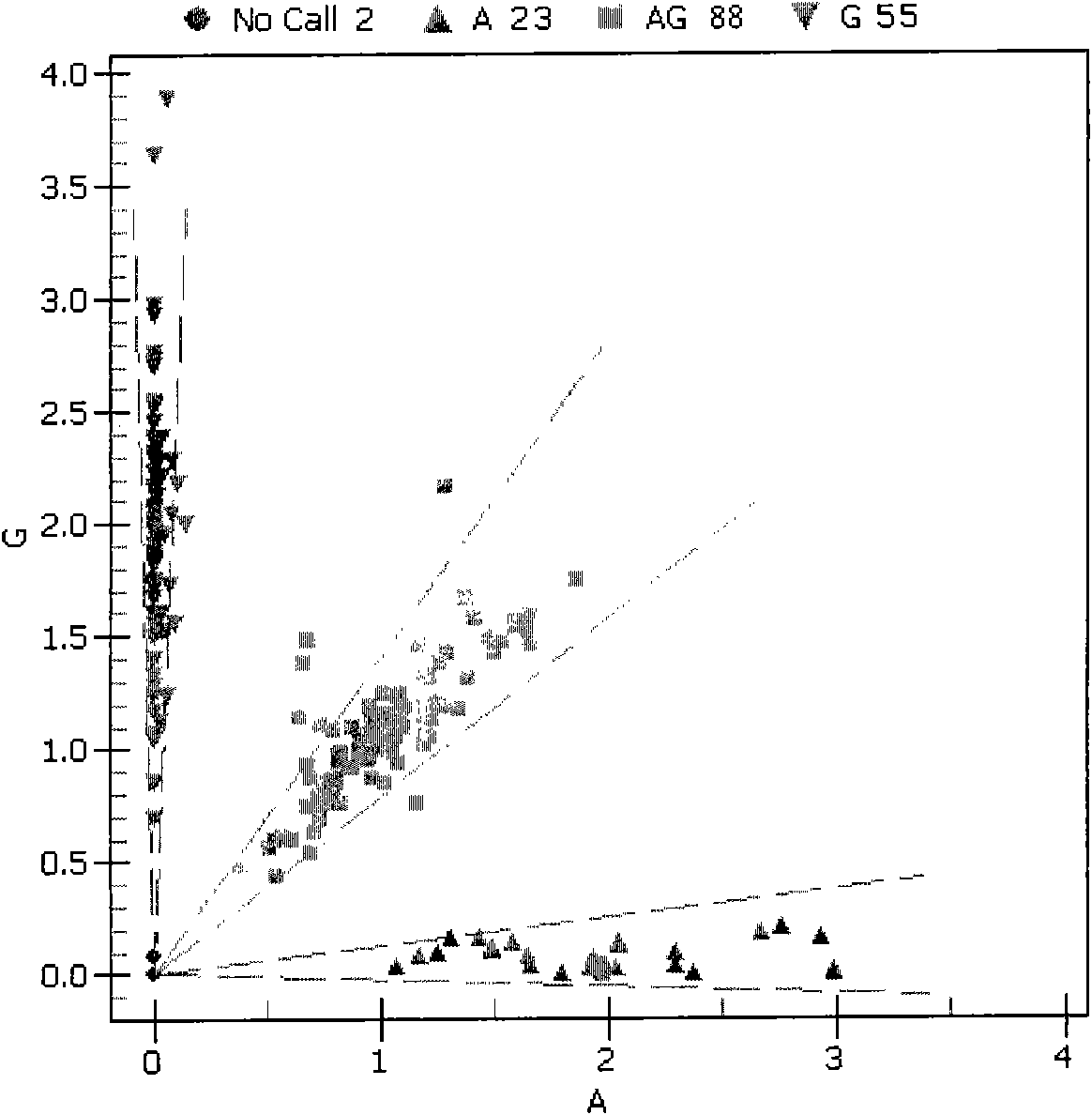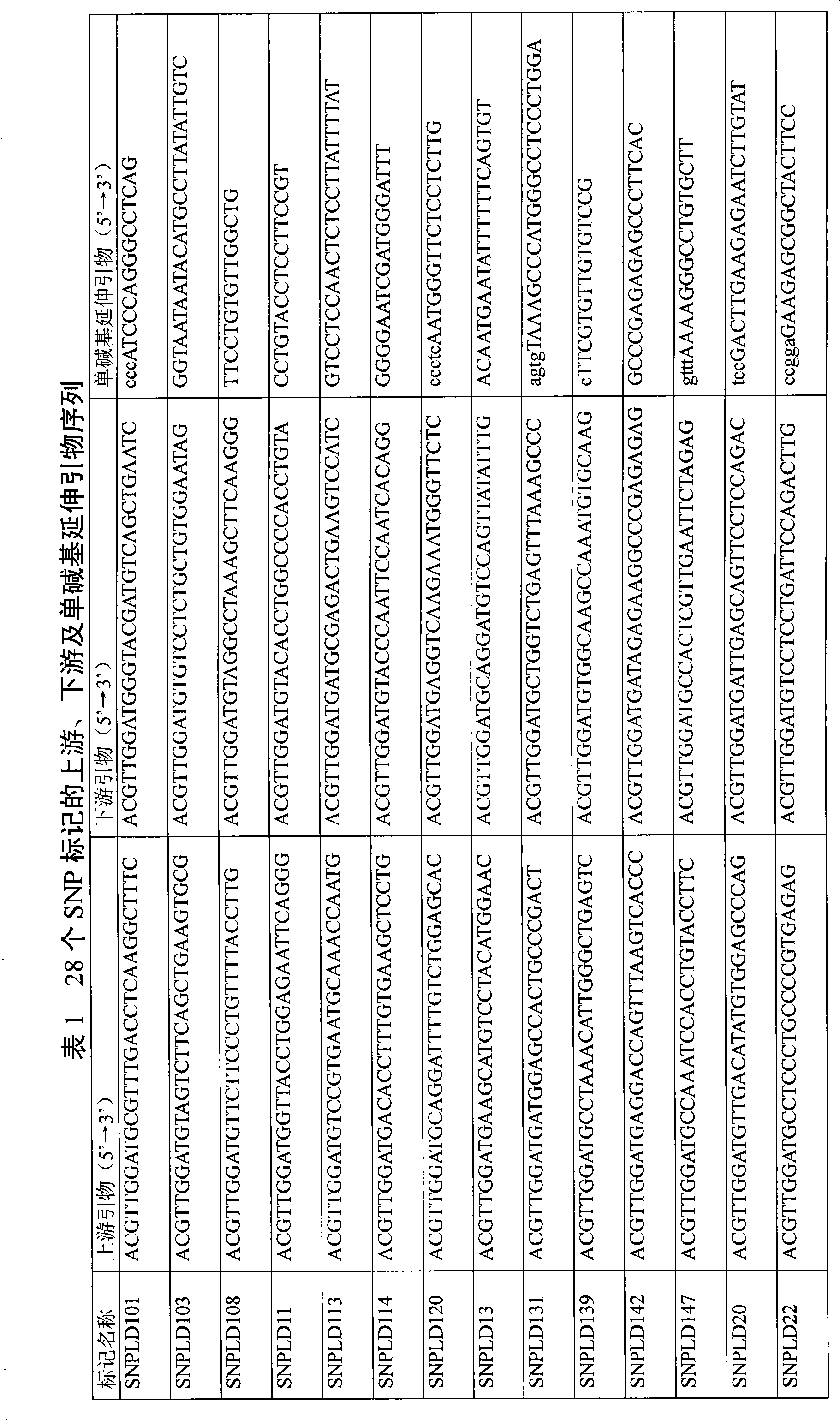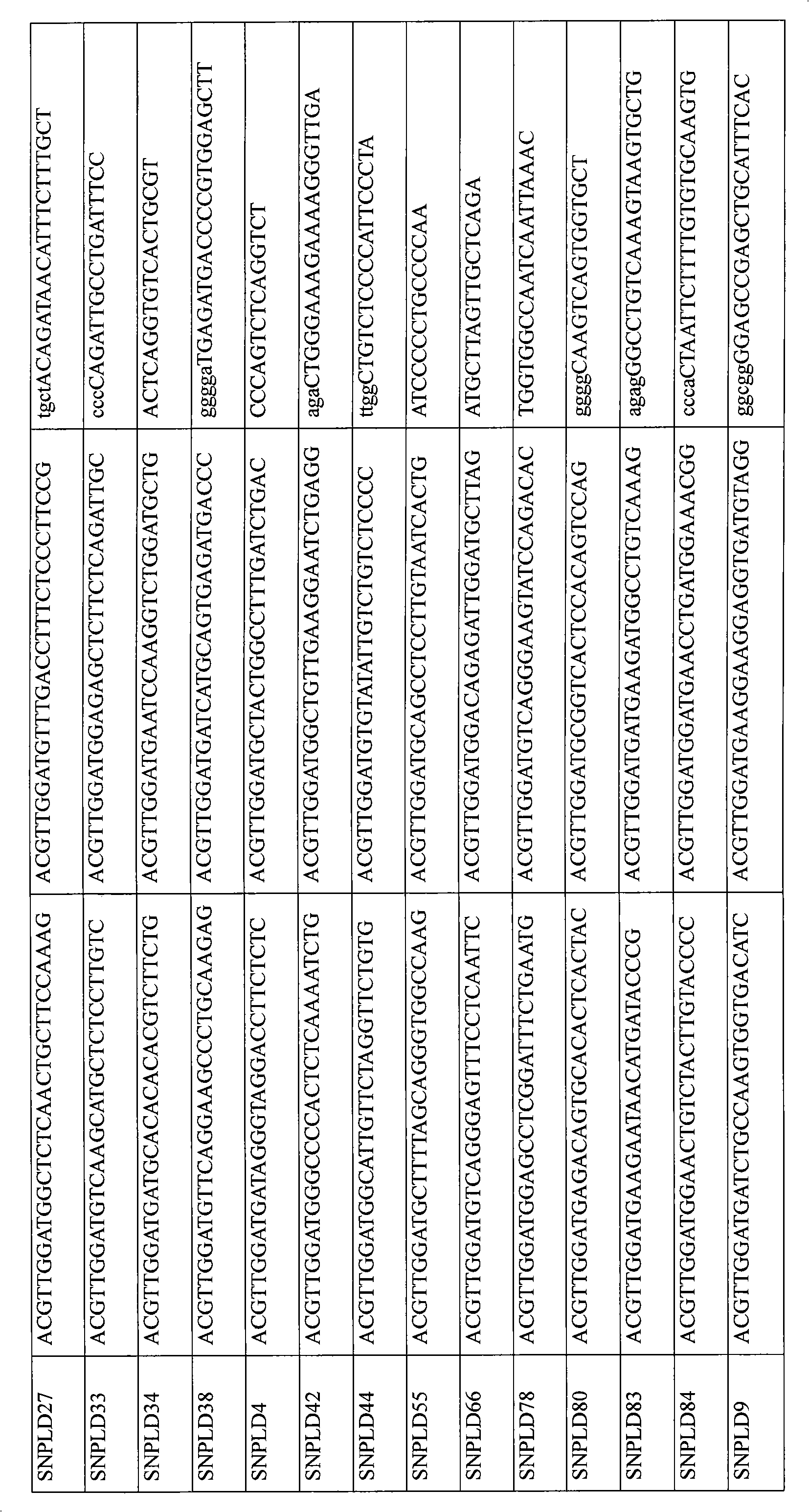Paternity testing single nucleotide polymorphism (SNP) label combinations and detection method for Holstein cattle group
A paternity test, Holstein cattle technology, applied in the field of Holstein cattle paternity test detection system, can solve the problems of long time and heavy workload, etc.
- Summary
- Abstract
- Description
- Claims
- Application Information
AI Technical Summary
Problems solved by technology
Method used
Image
Examples
Embodiment 1
[0045] Example 1: Selection of SNP marker combinations
[0046] The present invention has gone through three processes altogether to the selection of the SNP mark that is used for paternity identification system, specifically as follows:
[0047] (1) Preliminary screening of references and bovine microarray data
[0048] The main sources of the SNP markers initially selected in the present invention include two parts, one part comes from the partial SNP markers applied to cattle reported in the literature (Heaton et al., 2002; Werner et al., 2004), and the other part comes from the whole genome selection of cows in China Agricultural University. Research group ("948" project 2010C10) SNP marker chip (BovineSNP50 Genotyping BeadChip) data, a total of 149 SNP markers were obtained.
[0049] (2) Pool DNA sequencing
[0050] Primers were designed for the above 149 SNP markers, and 30 unrelated Holstein cattle mixed DNA pools were used as templates, and ABI 3730XL was used for di...
Embodiment 2
[0063] Example 2: Carrying out SNP polymorphism analysis and parentage inference on cattle herds by means of flight mass spectrometry:
[0064] 1. Genome Extraction
[0065] 1. Anticoagulant DNA extraction method
[0066] The blood sample in this test is bovine whole blood added with anticoagulant (sodium citrate). The blood was taken from the tail vein and stored in a freezer.
[0067] In this test, the spin column method was used to extract anticoagulant DNA, and the DP318 kit produced by Tiangen Company was used. The specific steps are as follows:
[0068] Shake the sample upside down, and take 600ul whole blood from the middle of the sample tube into a 2mL centrifuge tube.
[0069] Add 20ul proteinase K and 200ul buffer GB, use a vortexer for 15 seconds, and shake well.
[0070] Put the sample into a molecular hybridization oven at 56°C, pay attention to tightly cover the lid or use a parafilm to prevent leakage, digest for 5-10 hours, slowly invert and mix well while d...
Embodiment 3
[0126] Embodiment 3: Application in real groups
[0127] In order to verify the feasibility and accuracy of inferring the whole set of SNP markers in the actual population, ten family combinations (trios) were randomly selected from the experimental population to do the actual parent-child inference verification, and the data results obtained in Example 2 were used to carry out the mother-child test. The results of inference, father-son inference and parent inference are shown in Table 12 and Table 13 respectively.
[0128] Application of Table 1228 SNP marker combinations in actual populations
[0129]
[0130] Note: * Represents extremely significant parent-child relationship (confidence level exceeds 95%), + represents parent-child relationship is more significant (confidence level exceeds 85%) - represents parent-child relationship fails to meet the significant requirements (confidence level is less than 85%), all three situations indicate The parent-child relationshi...
PUM
 Login to View More
Login to View More Abstract
Description
Claims
Application Information
 Login to View More
Login to View More - R&D
- Intellectual Property
- Life Sciences
- Materials
- Tech Scout
- Unparalleled Data Quality
- Higher Quality Content
- 60% Fewer Hallucinations
Browse by: Latest US Patents, China's latest patents, Technical Efficacy Thesaurus, Application Domain, Technology Topic, Popular Technical Reports.
© 2025 PatSnap. All rights reserved.Legal|Privacy policy|Modern Slavery Act Transparency Statement|Sitemap|About US| Contact US: help@patsnap.com



